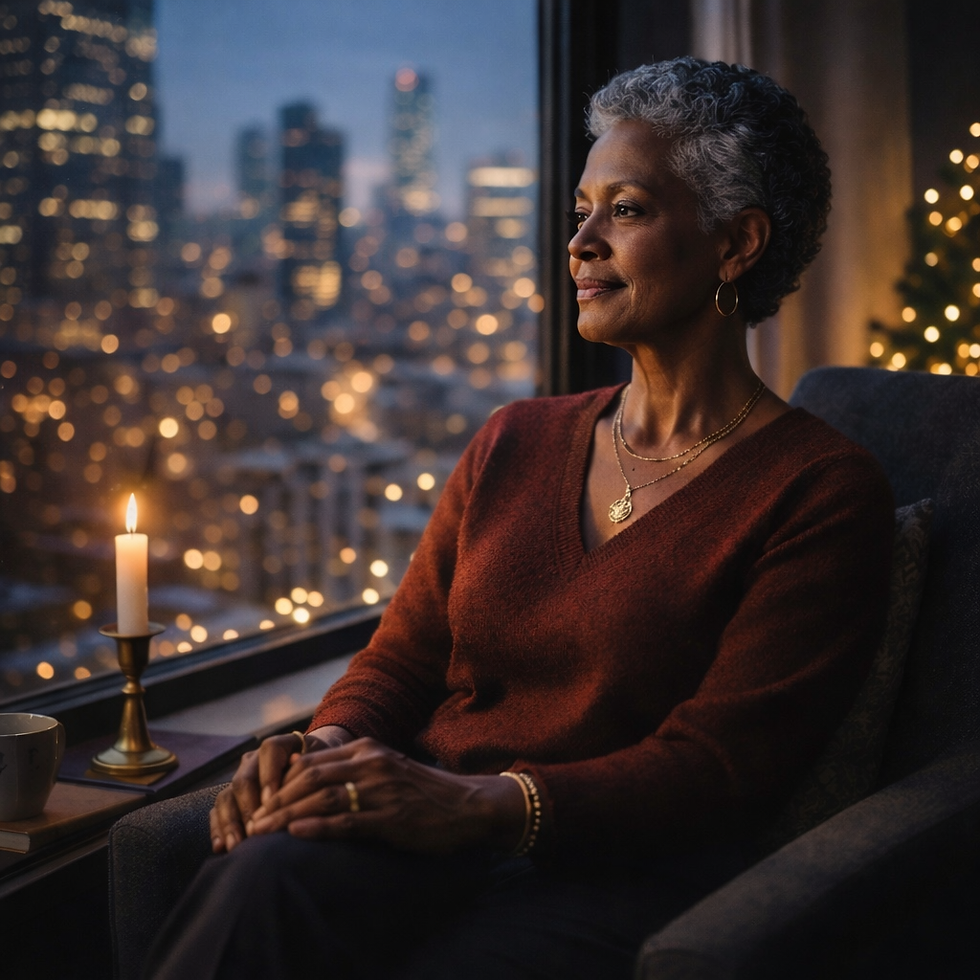Blog #65. Wait! I’m Aging?
- Jennifer Butz
- Jun 23
- 2 min read
Pop quiz! How old were you when you realized you were aging—not just getting older, but aging? What happened that made you stop and think: Wait…when did this happen?
For some women, aging is tied to parenting. Life marched forward in tidy segments: kindergarten, public school, high school graduation, maybe college drop-offs, and eventually, the glow of grandparenting. The seasons of your children’s lives became the calendar for your own.

For those of us who are, by choice or circumstance, childfree, the timeline can be a little blurrier. We might have Auntie energy, or play a supporting role in someone else’s family milestones, but it’s not the same. Without those built-in benchmarks, aging unfolds in less linear ways. A friend’s retirement. The first gray eyebrow. Or being called “Ma’am” twice before your first cup of coffee.
Regardless of our path, society hands eldering women the same dusty, one-size-fits-nobody script. No nuance. No customization. Just the usual platitudes—“enjoy your golden years,” “you’ve earned your rest,” and other phrases so condescending they practically come with a shawl and a rocking chair.
Let’s pause on that for a minute. When Social Security was introduced in 1935, the average American man lived to be 58. Women, who made up only 24% of the formal workforce then, lived until 64. Retirement was a brief affair.
Fast forward to today: women in the U.S. make up 67% of the formal workforce and live on average until 81. That’s decades more life—post-career, post-childrearing, post-productivity grind. What do we do with those years?
Society didn’t wait until retirement to remind us we were aging. Oh no. That memo comes earlier.
In our 30s, ads gently coaxed us to “start preventing fine lines” (cue the dewy 22-year-old applying serum). In our 40s, commercials celebrated women who gushed, “No one believes I’m over 40!” (as if that’s the highest compliment we could receive). And by our 50s? The anti-aging industrial complex pulls out the big guns—injectables, tucks, lifts, and a cultural whisper that says: Stay young or disappear.
According to commercial data, women between the ages of 35-54 spend the greatest on “age correcting” procedures. Indeed, US women spend an estimated $20 billion on surgical and non-surgical “anti-aging” treatments annually. Don’t get me started on correcting age!
The real question isn’t when you first noticed you were aging. It’s who told you that aging was something to be corrected. What if the milestones of aging weren’t warnings but invitations? What if the years ahead aren’t a slow fade, but a loud, technicolor encore? What if, instead of trying to rewind, we got really curious about what it means to age in power?
Stay tuned—next week, we’re talking about rebel aging— how we can leverage our wisdom, our wonder, and throw in a few shenanigans for good measure.
Until then, join me at WonderCrone.com, where we’re rewriting the rulebook—one wrinkle, one revelation, one righteous crone at a time.





Oooh! Can’t wait for rebel aging!